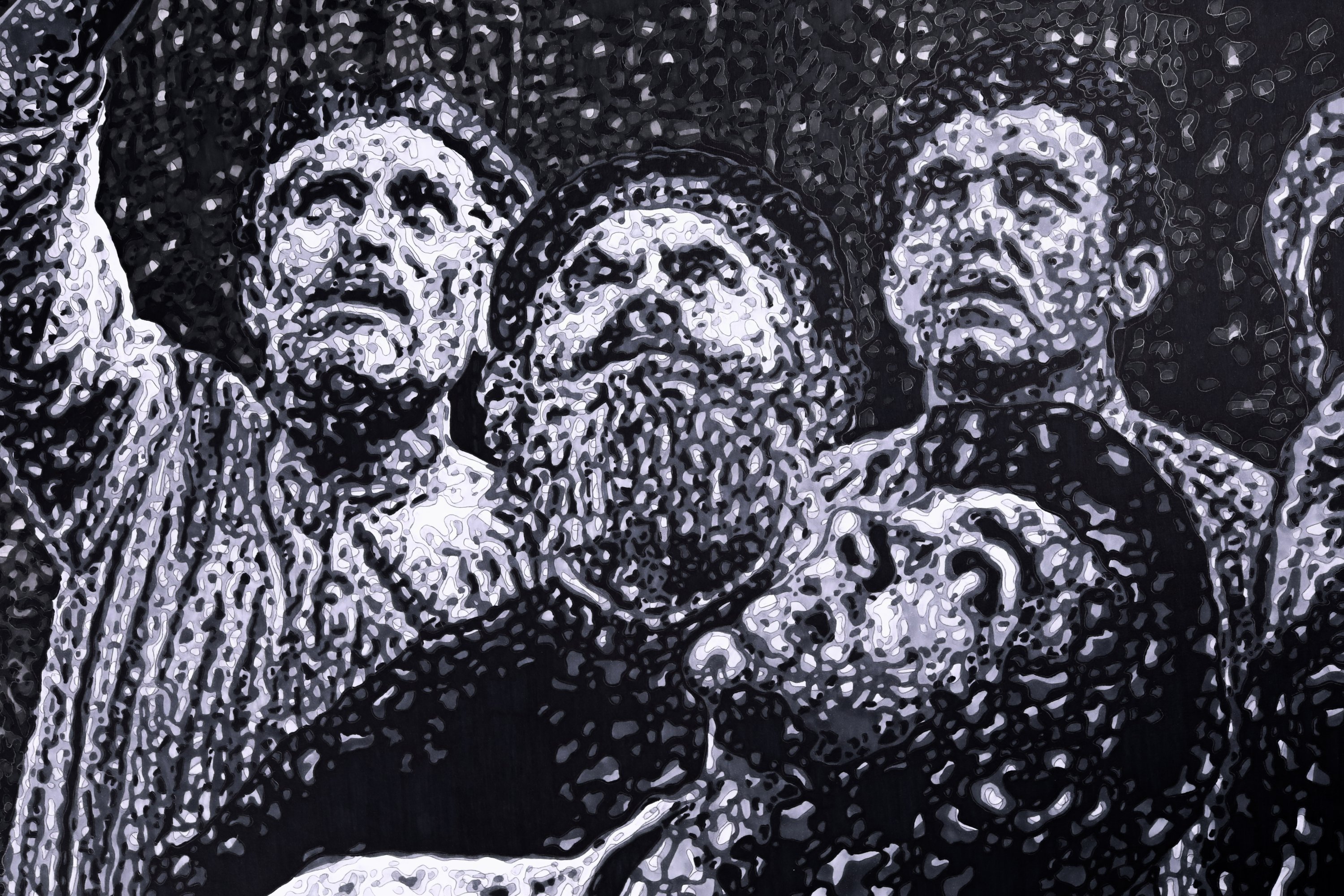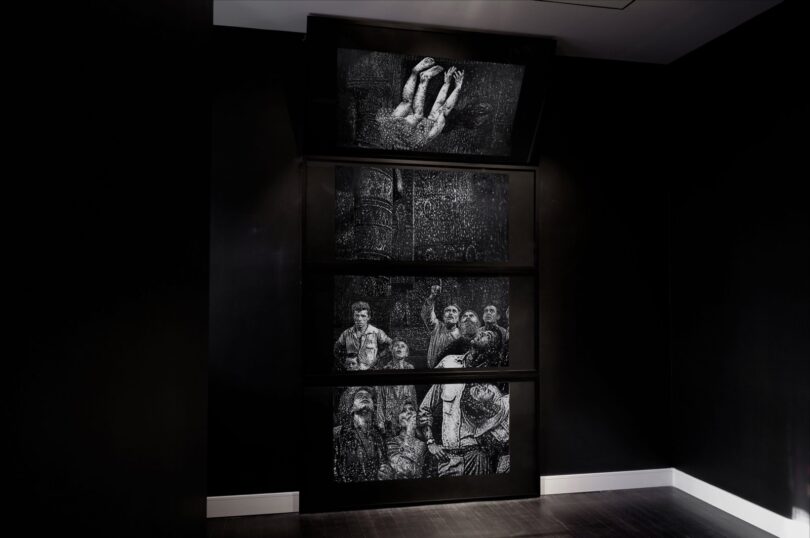ISTANBUL : Vision Art Platform hosted the one-night exhibition ‘Idiosyncrasy’ to delve into the lines of Renaissance and modernist engravings, forming it through the concept of ‘child’ that was employed in art history
“Idiosyncrasy” was hosted for only one night and just for a few hours on Jan. 17 with an unconventional exhibit that broke with the tradition of the art gallery Vision Art Platform located in Beşiktaş’s Akaretler.
Sefa Çakır’s black-and-white line painting, specially made with the marker technique on paper, “Idiosyncrasy” evokes the engravings of Renaissance paintings even though it has a surrealist impression at the first sight.
“This is the effect of an image seen in Renaissance engravings, and engravings of painters such as Albrecht Dürer and Giorgio Vasari, and evoking compositions established in classical paintings over time. It is the effect of an image that is observed in the societies through the ages with the relationships between the realities of the world and celestial dreams, metaphors inherited from generation to generation by grand narratives,” prominent art critic and curator Beral Madra said about the work.
The painting requires the audience to observe it in three stages. Starting from the bottom, we see a group of people looking toward the sky with excitement or anxiety, witnessing an extraordinary event. In the third stage, at the top, we see that a girl is falling from the sky, which reveals the secret behind the wondering eyes in the painting.
For Madra, the falling of the girl can be read in two ways, as she said: “The child can be a possible gift sent from God, as perceived in classical paintings or the child falls in a leap as a result of an accident or violent act. Considering the dilemmas societies experienced around the concept of ‘child’ in a global and local frame, it is quite understandable. The artist creates a background to his narrative, employing a columnar architecture evoking the historical past, pointing to the problem of memory in individual and social epistemology.”

‘Idiosyncrasy’
The image of a child has great importance in art history, not only limited to the depiction of baby Jesus carried by the Virgin Mary. Many modernists such as Pablo Picasso and Henri Matisse employed some techniques that mimicked the drawing of a child in their portraits.
Also making a child the focal point of the painting, Çakır traces the relationship between his identity and the political, economic and cultural order in which he lives. These children are not icons of innocence in these paintings that the audience can reflect on their longings and dreams. Alongside those who are protected by their families, these children make us think of children who are poor, neglected, abused, have to live on the street, have to work, are born disabled, are refugees and grow up in prisons.
Reckoning with digital production
Line drawings in the history of art always form an important infrastructure for the paintings produced today. In this frame, the artist’s work is a reckoning with the technical and digital production of today’s visual language. Çakır questions the whereabouts of drawing and line painting in art production where computer techniques and digital visual language are effective.
The innocence, purity, devotion, and determination of existence, which are evident in the child images and portraits during the production process that Çakır explored to create “Idiosyncrasy,” are emphasized by the possibilities offered by drawing as a primary creativity tool.
Courtesy: Dailysabah







